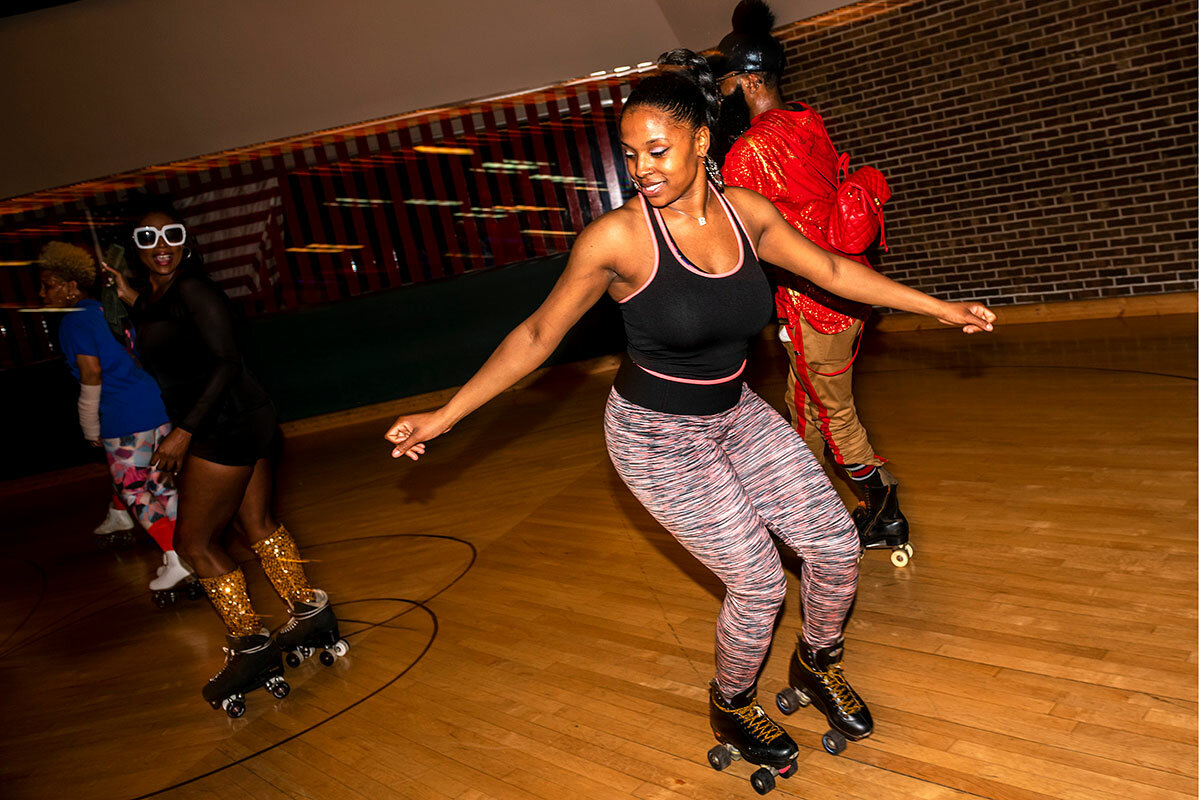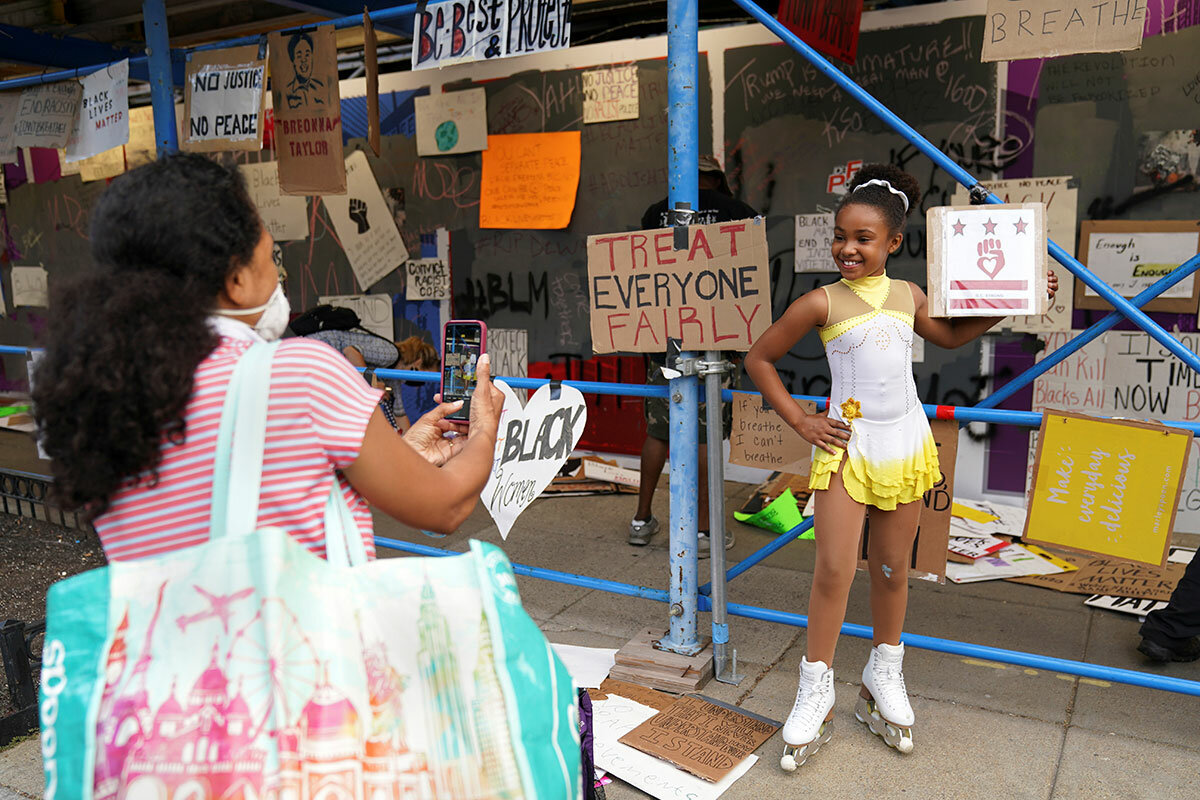When the world stood still, they found freedom on roller skates
Loading...
A 10-second TikTok video was all it took for actress Ana Coto to ignite a summer trend – that, and a pair of turquoise roller skates.
The video, posted in May, features Ms. Coto effortlessly skate-dancing down a road while lip-syncing to the Jennifer Lopez song “Jenny from the Block.” More than 15 million views later, some pinpoint her video as the reason why it’s currently almost impossible to find a quality pair of skates for sale online. There are now more than 1.2 million posts in the #rollerskating tag on Instagram and 2.2 billion views on the tag on TikTok. On YouTube, viewers can find tutorials and trick videos, accompanied by vlogs with titles like “Learning to Roller Skate in 5 Days.”
Roller-skating, which is easily done in the open air and translates well to video, fills the lockdown void perfectly for many young adults. Even so, the newfound interest belies a thriving contemporary subculture that carries with it nearly a century of history and includes ties to African American culture and the civil rights movement. Though the sport has cycled in and out of style, its enduring appeal has captured generations of skaters.
Why We Wrote This
Do pastimes ever really go away? Roller-skating is back again, driven by young people escaping pandemic restrictions and a history that connects it to Black culture.
“It gives you a sense of freedom,” says Darius Stroud, an influential roller skater who has been on the scene for decades and is better known by his skate name D-Breez, in a phone interview. “You don’t have to align with what somebody else does. ... It allows you free creation and expression of the self.”
The latest spike of online attention is tied, in part, to the fresh image the sport has gained since brands like Moxi (started in 2010) and Impala (started in 2017) began selling bright, trendy roller skates that can be easily coordinated with stylish outfits. Flashier than the black-and-white binary of rental skates, they’re marketed as high-performance gear suitable for rough outdoor skating and high-impact tricks.
For the most part, contemporary American skate culture is also diverse and welcoming, though atmosphere and skate style can vary wildly depending on locale. Women are at the forefront of both bowl skating and the competitive team sport roller derby. Roller dancing has been closely tied to trends in music since disco took off in the 1970s; today, there are dozens of regional dance styles, most originating from Black culture.
“What is wonderful about the roller-skating community is that it’s so inclusive,” says Rebel Mang, a roller skater who creates tutorials on her YouTube channel Queer Girl Straight Skates, in a phone interview. “It’s inclusive, it’s forward-thinking. ... There’s something about the intersection of roller-skating and queerness that makes me feel more me and more represented within my identity.”
The sport’s popularity has waxed and waned constantly since it began. In the “golden age” of skating from the 1930s into the 1960s as many as 18 million Americans regularly skated. Beginning in the 1970s, rinks were packed with a generation infatuated with disco music. And the sport is inextricably tied to African American culture, from civil rights movements to desegregate roller rinks to the origins of music and dance styles – like disco – that tend to accompany spikes in skating’s popularity. Today, skaters continue to innovate within contemporary variations on the sport including roller derby, park or bowl skating, and adult-night events.
D-Breez, for example, currently organizes the Independence Roll, a national skating convention held annually in Chicago. His event is one of dozens of similar national-level roller rink events attended in large part by members of the Black skating community, the first of which was organized by a skater named Vanessa Poindexter in the early 1990s – the same decade when rink skating became associated with burgeoning genres of hip-hop and rap. (The 2018 documentary “United Skates” covered the underground scene, as well as the fact that rinks across the nation are being rezoned and permanently closed, and that Black roller events are often heavily policed.)
Ms. Mang notes that today’s skate world is not without its shortcomings. “It has glaring faults,” she says. The history of segregation in roller rinks is still felt today, where coded anti-Black language – “No saggy pants” – is not uncommon. On some sites including TikTok, algorithms can boost white creators over those of other races, potentially minimizing the spread of content from nonwhite skaters. What’s popular online “is just not an accurate representation of what the skate community is,” says Ms. Mang. “It’s not what you see on social media.”
Veterans of the scene agree that the current wave of interest is not so much a revival of a dead sport but the latest iteration of an established discipline. “Skating goes through its phases,” says D-Breez. “It’s basically an art form and a sport. And any time a sport gets some popularity and traction, it’s good because it brings eyes to that sport, and it makes people understand it. ... Which, of course, can help the rinks stay open.”
Ms. Mang says that her participation in skating “has helped me to love my body in a way that I’ve never loved my body before.” But it’s more than that, she adds. “It feels like you understand where somebody is coming from when you know that they’re roller-skating.”









